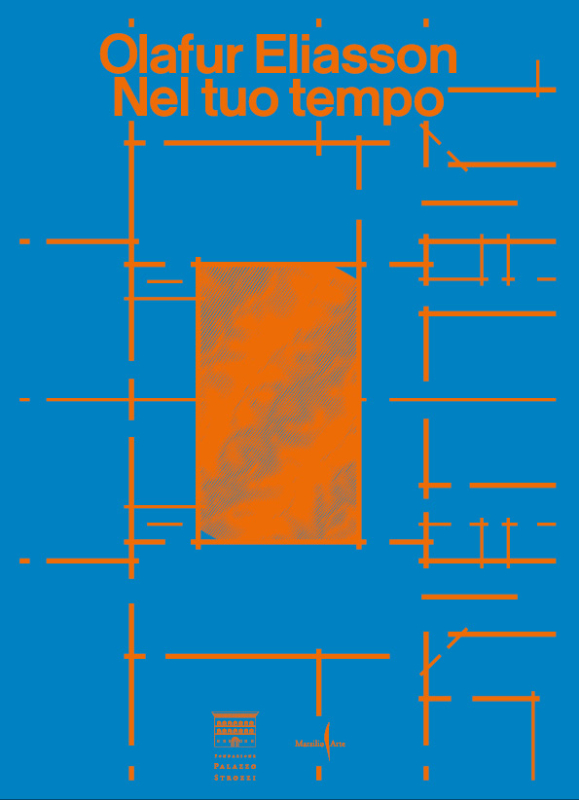The work of Olafur Eliasson (born 1967), one of the most original and visionary of contemporary artists, focuses on the accomplished use of shadows and the relationship between body, mind, emotions and place.
Eliasson urges us to look within ourselves to reflect on the way we live and how we spend our time with art, but also on the social spaces we inhabit. The relationship with space lies at the centre of the artistic theme developed for the Nel tuo tempo (In your time) exhibition held in Palazzo Strozzi in Florence (22 September 2022 - 23 January 2023).
The volume will enable the reader to immerse himself in Eliasson's artistic world thanks to the inclusion in the catalogue of a large part of his artistic production, illustrated through an extensive group of photographs, installation sketches and preparatory drawings. In the relationship between the artist and the fifteenth-century Palazzo Strozzi, we sense the desire not to accept the marvellous Florentine building as a passive guest, a mere container, but rather as a co-producer of the exhibition itself. Indeed, the artist has worked on all of the Palazzo’s Renaissance rooms, occupying the courtyard, the piano nobile and on to the Strozzina, placing his immersive installations throughout the exhibition spaces. This creates a captivating itinerary that brings together new installations and historical works: Eliasson's intuitions have always included social space and the study of how it is occupied by people. Although each of his works is addressed to everyone indiscriminately, it is also true that each viewer can grasp something different according to his or her own spatial perceptions and personal history.
In addition to a long text by the artist himself, Nel tuo tempo includes a wide-ranging introduction by Arturo Galansino, according to whom, thanks to his many interests ranging from architecture to science to the psychological relationship between the people and space, the artist represents the perfect symbol of the artist-humanist of the third millennium, and one who finds his natural exhibition context in Palazzo Strozzi, a building that symbolises Florentine Humanism.
Further enriching the catalogue are the many sketches distributed among the pages and often superimposed on the texts that Eliasson uses to synthesise or expound his ideas or simply to fix intuitions and inspirations on paper.
